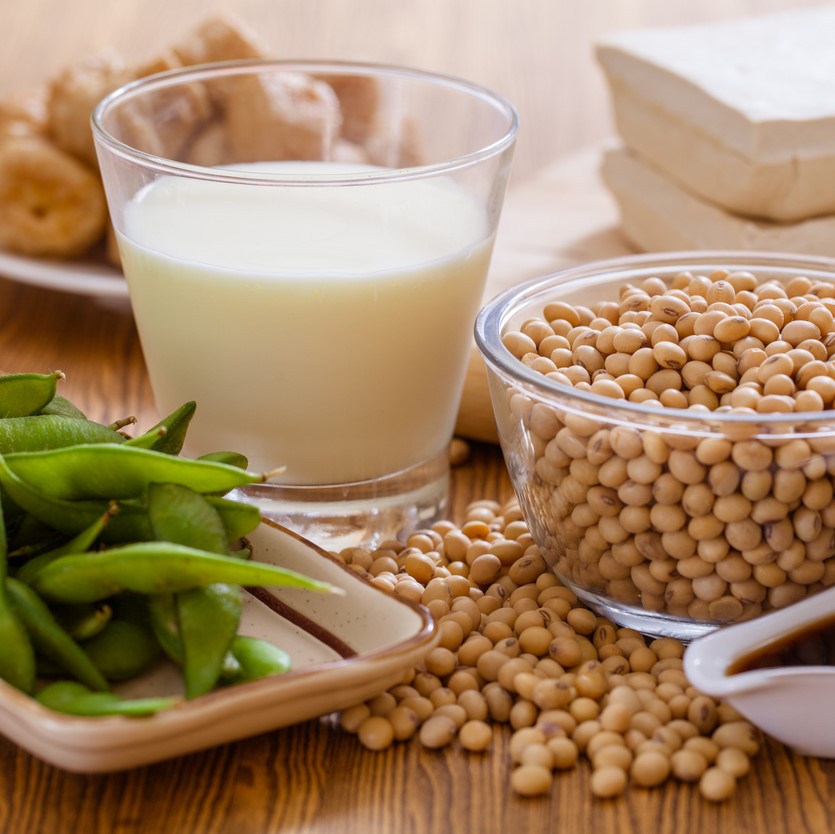- Soy is considered a priority food allergen by Health Canada. Priority food allergens are the foods that cause the majority of allergic reactions.
- Soy comes from soybeans, a type of legume. Soybeans can be made into flour, soy milk, tofu, oil, and other products.
- Although soybeans are a legume, a person with a soy allergy may not be allergic to other legumes, including peanut.
- A soy allergy is most common in infants, however many children do outgrow soy allergy. Soy allergy can also be a lifelong condition. If your child has a soy allergy, consult with your allergist before reintroducing your child to soy products.
- People who are allergic to soy may not need to avoid soy oil. Soy oils tend to be refined enough to remove all of the proteins that can trigger allergic reactions. However, if you have soy allergy, consult with your allergist before eating anything made with soy oils.
- Soy lecithin is a food additive derived from soy bean oil and typically does not contain sufficient protein to cause allergic reactions. However, as soy lecithin is not completely protein-free, some individuals who are allergic to soy may still have a reaction. If you have a soy allergy, consult with your allergist before eating anything containing soy lecithin.
Allergic reactions to soy
An allergic reaction usually happens within minutes after being exposed to an allergen (e.g., soy), but sometimes it can take place several hours after exposure. Anaphylaxis is the most serious type of allergic reaction.
Symptoms of anaphylaxis generally include two or more of the following body systems:
If you have a soy allergy, keep an epinephrine auto-injector (e.g., EpiPen®, ALLERJECT®) with you at all times. Epinephrine is the first-line treatment for severe allergic reactions (anaphylaxis).
Be allergy-aware: How to avoid soy
- Read ingredient labels every time you buy or eat a product. If the label indicates that a product “Contains” or “may contain” soy, do not eat it. If you do not recognize an ingredient, if there is no ingredient list available, or if you don’t understand the language written on the packaging, avoid the product.
- Do the Triple Check and read the label:
- Once at the store before buying it.
- Once when you get home and put it away.
- Again before you serve or eat the product.
- Always carry your epinephrine auto-injector. It’s recommend that if you do not have your auto-injector with you, that you do not eat.
- Check with manufacturers directly if you are not sure if a product is safe for you.
- Be careful when buying products from abroad since labelling rules differ from country to country.
- Watch for cross-contamination, which is when a small amount of a food allergen (e.g., soy) gets into another food accidentally, or when it’s present in saliva, on a surface, or on an object. This small amount of an allergen could cause an allergic reaction.
Other names for soy
- Bean curd (dofu, kori-dofu, soybean curds, tofu)
- Edamame
- Glycine max
- Kinako
- Kouridofu
- Miso
- Hydrolyzed soy protein
- Natto
- Nimame
- Okara
- Soya, soja, soybean, soyabeans
- Soy protein (isolate/concentrate), vegetable protein
- Tempeh
- Textured soy flour (TSF), Textured soy protein (TVP)
- Yuba
Possible sources of soy
- Mono-diglyceride
- Baby formulas
- Baked goods and baking mixes like breads, bread crumbs, cereals, cookies
- Breaded foods
- Bean sprouts
- Beverage mixes
- Chili, pastas, stews, taco filling, tamales
- Canned tuna, minced hams
- Chewing gum
- Chocolate candies and chocolate bars
- Cooking spray, margarine, vegetable shortening, vegetable oil
- Deli meat and processed meats
- Diet drinks, imitation milk
- Dressings, gravies, marinades
- Frozen desserts, soy ice cream, soy pudding, soy yogurt
- Hydrolyzed plant protein (HPP), hydrolyzed soy protein (HSP), hydrolyzed vegetable protein (HVP)
- Imitation crab and other imitation fish
- Monosodium glutamate (MSG)
- Processed and prepared deli meats, e.g. burgers, meat substitutes, patties, wieners
- Vegetarian meat substitutes
- Sauces such as soy, teriyaki and Worcestershire
- Seasonings
- Snack foods like candy, candy bars, popcorn, energy bars
- Soy “cheese”
- Soups, broths and soups mixes, miso soup
- Spreads, dips, mayonnaise, peanut butter
- Thickening agents
- Vegetarian dishes
Non-food sources of soy
- Cosmetics, soaps
- Craft materials, crayons, paint
- Glycerine
- Pet food and milk substitutes for young animals
- Printing ink
- Medications, vitamins, herbal supplements
- Candles
Note: The above lists are not complete and may change.
Report a reaction
If you believe you may have reacted to an allergen not listed on the packaging, you can report it to the Canadian Food Inspection Agency, which may issue a product recall. Find out more on our Food Labelling page.

